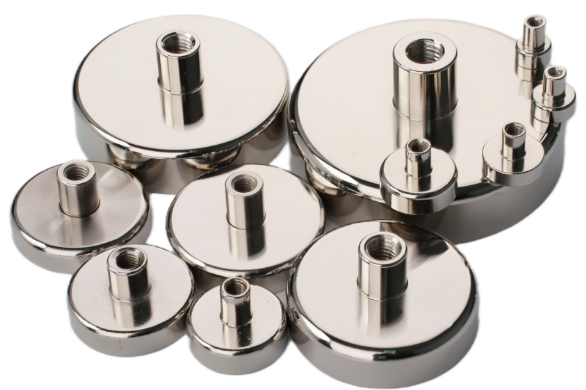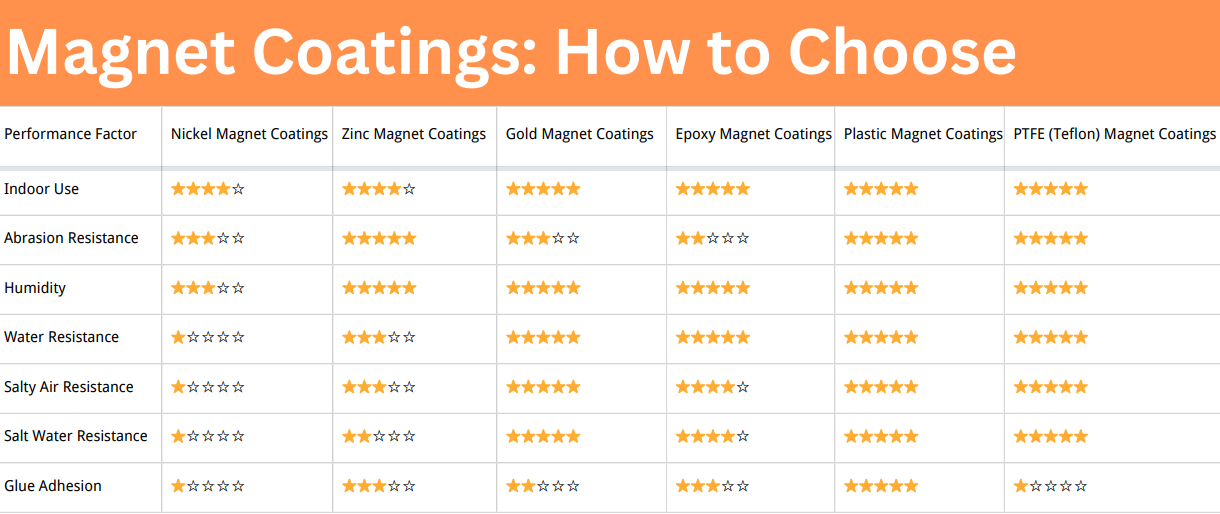Neodymium Magnet Grades
Neodymium magnet, also known as NdFeB magnet, has excellent magnetic properties and is widely used in electronics, medical equipment, toys, packaging, hardware machinery, aerospace, and other fields.
However, many people, especially those who are new to neodymium magnets, are confused about the meaning of the different letters and numbers in a grade's name. Therefore, in this article, we will explain the difference in neodymium magnet grades with magnetic tables.

Neodymium Magnet Grades
What Does the Letter Mean for Neodymium Magnets?
It all starts with the letter "N". The names of all neodymium magnets begin with "N", which means neodymium. The number that follows is a little more technical because it represents the maximum energy product of a magnet in "Mega-Gauss Oersteds" (MGOe), which is the main indicator of magnet strength. In short, the higher the maximum energy product value, the larger the magnetic field that the magnet will generate in a particular application.
Sometimes, you may also see one or two letters tagged onto the end of a grade. They determine the temperature rating and represent the highest operating temperature the magnet can withstand before it starts to lose magnetism permanently. These ratings should always be regarded as guide values, as other factors (such as size and shape) also have an impact on magnet performance at high temperatures. For more information, you can visit our "How does temperature affect the neodymium magnets" page.
Here's what the letters mean:
Temperature Ratings for Neodymium Magnets:
|
Letter Code |
Max Operating Temperature (°C) |
Description |
|
None |
80 |
magnet (no special temperature resistance) |
|
M |
100 |
Moderate temperature resistance |
|
H |
120 |
High-temperature resistant |
|
SH |
150 |
Super-high temperature resistant |
|
UH |
180 |
Ultra-high temperature resistant |
|
EH |
200 |
Extremely-high temperature resistant |
|
TH |
230 |
Top-level temperature resistance |
How This Affects Applications:
- Higher temperature resistance (e.g., SH, UH) is essential for applications where the magnet will be exposed to high heat, such as in motors, generators, or industrial equipment.
- Standard magnets (with no letter or just "N") are suitable for most general-purpose applications but can lose magnetic strength if exposed to temperatures above 80°C.
How to Choose Different Grades of Neodymium Magnet Products?
The grades that can usually be purchased range from N30 to N52, because low-grade neodymium magnets are usually no longer produced. At Stanford Magnets, we do not make any compromises on quality. Most of our magnets are grade N42 or above. Compared with many cheaper N35 grade neodymium magnets, their magnetism is 20% higher.
N42 grade provides high performance at an economical price. Grades above N42 tend to be more expensive and the increase in price is not proportionate to the improvement in performance. A good example is the N52 grade, which is 20% more powerful than the N42 grade, but at twice the price.
When a higher performance neodymium magnet is required and the available space for the magnet is limited and cannot be increased, then a higher grade should be used. Otherwise, using two N42 magnets will be more advantageous than using one N52 magnet.
The following is a table about the details of neodymium magnet grades and their magnetic properties for your reference. You can check Stanford Magnets for more details and tables.

Neodymium Magnet Grades

Neodymium Magnet Grades

Neodymium Magnet Grades

Neodymium Magnet Grades
Conclusion
As a leading magnet supplier across the world, Stanford Magnets has been involved in R&D, manufacturing, and sales of magnets since the 1990s. It provides customers with high-quality permanent magnets like neodymium magnets, SmCo magnets, AlNiCo magnets, and ferrite magnets (ceramic magnets) at a very competitive price.















